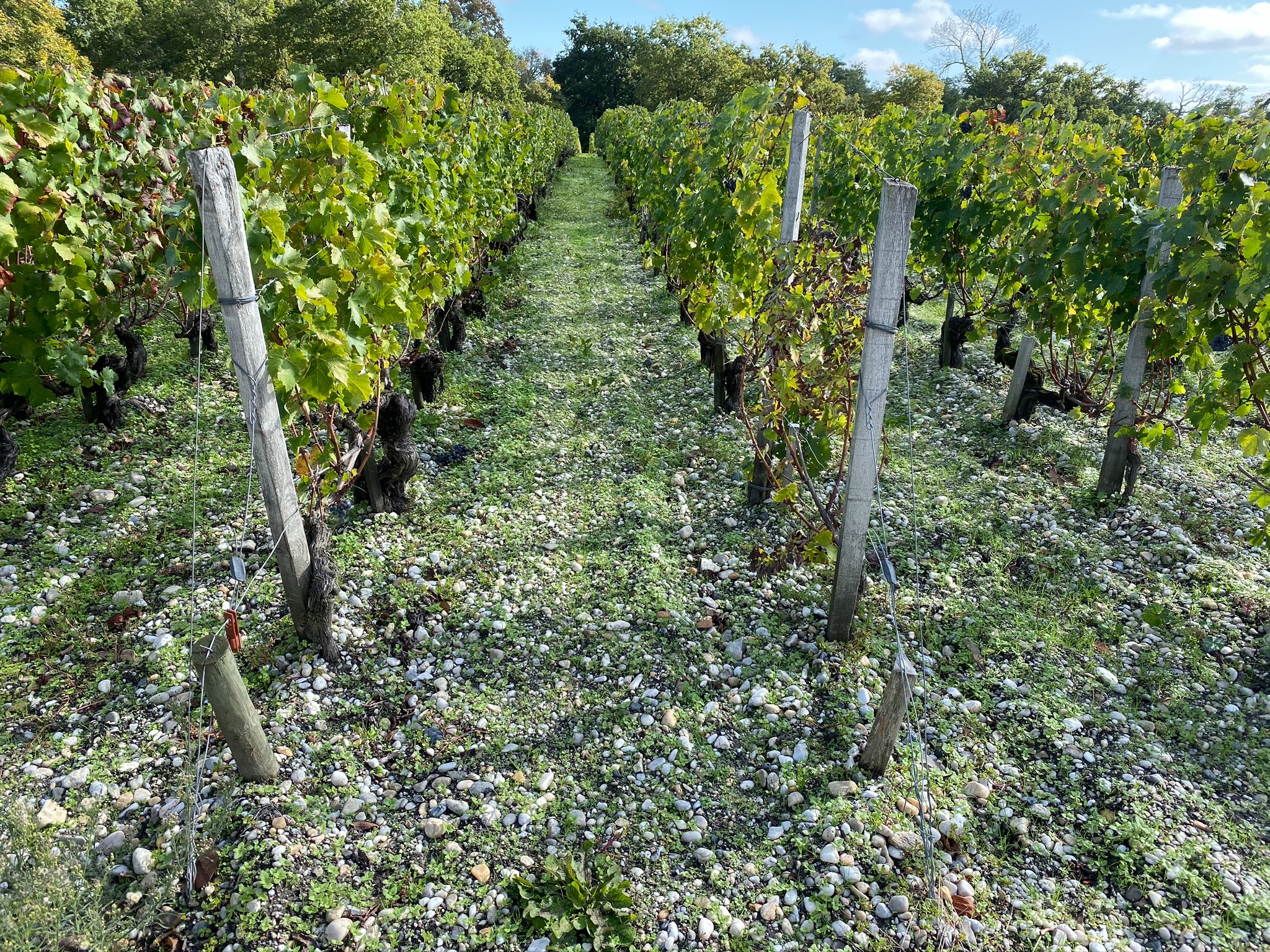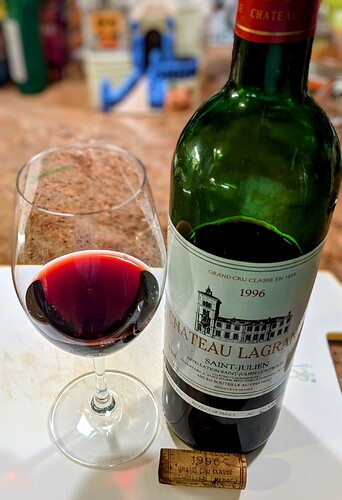Hi all,
Our second visit after Beychevelle was Lagrange. I was keen to visit because Lagrange is one of my favourite St.Juliens. I like its consistency and fair price and it’s one of the few châteaux that I buy almost every year. I’ve never had a Lagrange which has really challenged the top wines, but 1990, 1996 and 2000 were and still are great examples of what can be produced there.
After visiting Beychevelle, I was also curious because the two châteaux have something in common - Suntory, which is a part-owner of Beychevelle and which I believe owns Lagrange outright.
I remember when Suntory bought Lagrange in 1983: most if not all Bordeaux aficionados feared the worst. I think it was the first time that a Japanese company had purchased a major château and the general feeling was that although the investments they promised would improve the quality, the prices would sky-rocket and the wine might lose its typicity (and it would then probably be sold to another conglomerate).
Well, unlike Colony Capital at Lascombes, for example, this is not what happened .
Suntory made it clear that they were in for the long haul. They appointed a good management team, made the promised investments, improved the quality and consistency, but did not greatly increase the prices. Occasionally there is a temporary spike, but otherwise since the early 1990s, the price has remained stable, unlike virtually every other CC. Even an excellent vintage like 2016 can be found here for 35€, which is the same I paid for the 1996! If anything, I think that the pricing policy has been a little detrimental to Lagrange’s image - consciously or not, I suspect that people underestimate it as a result.
In terms of style, occasionally they go a bit overboard with the oak, but I’ve never noticed the extremes tasted elsewhere. It’s just a true Saint Julien.
So Suntory have proved to be an excellent custodian and an example for others.
On arriving at Lagrange, the first surprise is the beauty of the setting, with the lake and trees in front of the château:

Our visit began with the vines, which I forgot to take a photo of. They have cleverly planted several rows of various cépages so that visitors can see the difference between Cabernet Sauvignon and Merlot, for example, but there is also Petit Verdot, Carmenère, Malbec, Cab Franc, plus some white grapes - Sauvignon Blanc and Gris, Muscadelle and Sémillon.
They are experimenting with the Malbec, for example, but not using any yet. Likewise, they are experimenting with organic viticulture, but have no plans to go fully organic yet. With the widespread outbreak of mildew this year, it’s understandable and we could see for ourselves the shriveled grapes.
The cuvier was like most of the others - modern, practical, professional, but without the architectural fireworks elsewhere. Likewise the cellar:

Apart from our guide and a couple of people working in the vines, we were entirely alone, since in early August most of the team take their holiday, but this added to the slightly weird impression of visiting a ghost ship. As usual, the château itself was closed and shuttered.
And so to the wines, very much the highlight of our visit:
We began with their white wine, Les Arums de Lagrange 2018: interesting citrus notes and good acidity which balanced the slightly fat and luscious fruit, but with an annoying amount of oak.
Then we did a 2015 horizontal of all three reds: the Haut Médoc de Lagrange, Fiefs de Lagrange and Lagrange itself. This was fascinating as there was such a clear step up each time. The Haut-Médoc was similar to Les Brulières at Beychevelle - good fruit but clearly not a Saint Julien and a little green. Les Fiefs was very impressive, full of plump spicy fruit, not too much oak, long finish. The Lagrange just had more of everything and I was surprised by the crunchiness of the red fruit. Neither Les Fiefs nor Lagrange were ready, obviously enough, but going to and from the glasses, it was clear that Les Fiefs only needed a couple more years.
We kept our samples and our host then opened two more wines to compare with the 2015: Les Fiefs and Lagrange 2005.
Les Fiefs had a wonderful nose (from memory, cedar and forest fruits) and I was surprised by how good it was, with a really impressive mouthful of dark fruits and a very persistent finish.
Lagrange was again a step up, with more focus and more concentration, but also more tannins - it needs another two or three years I would think, but the bottle was opened in front of us so a few hours decanting may have loosened it up. Anyway, very impressive - I suspect the 2005 will surpass the 2000 with its better grip. Unlike other 2005s I’ve tried, I don’t see the tannins outlasting the fruit…
Of course, being able to compare the 2015s with the 2005s was a wonderful experience, especially for our girls. We actually felt that the Lagrange 2015 will turn out to be even better than the 2005 - it will be fun finding out!
I have no doubt that Beychevelle has produced higher quality wines in recent years, but for now, we left with the firm impression that Lagrange was as good, if not better - at under half the price.
So in terms of “wine tourism”, not as interesting and impressive as our visit of Beychevelle, but the wine tasting was excellent.

